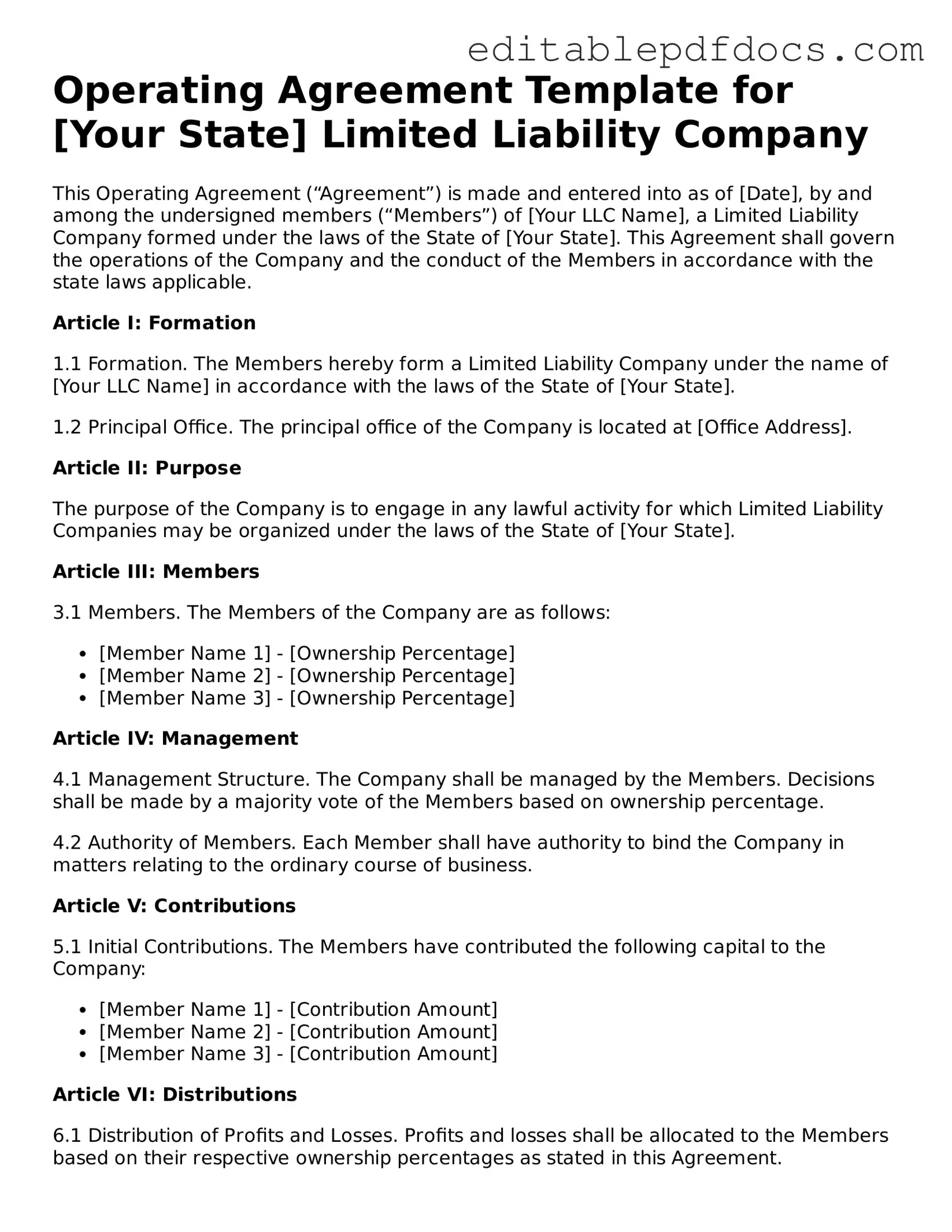Filling out an Operating Agreement form is a crucial step for any business entity, particularly for LLCs. However, many individuals make common mistakes that can lead to complications down the line. Understanding these pitfalls can help ensure that your Operating Agreement is both effective and compliant.
One frequent mistake is failing to include all members in the agreement. It’s essential to list every member of the LLC, including their ownership percentages. Omitting a member can lead to disputes later, especially regarding profit distribution and decision-making authority.
Another common error is not specifying the management structure. Some people assume that the default management structure will suffice, but it’s vital to clarify whether the LLC will be member-managed or manager-managed. This distinction affects how decisions are made and who has the authority to act on behalf of the business.
Additionally, many individuals overlook the importance of detailing the roles and responsibilities of each member. Clearly defining who does what can prevent misunderstandings and conflicts. Without this clarity, members may assume different responsibilities, leading to confusion and inefficiency.
Some people also neglect to include a process for resolving disputes. An Operating Agreement should outline how conflicts will be handled, whether through mediation, arbitration, or another method. Without a clear process, disputes can escalate and disrupt business operations.
Another mistake is not addressing the exit strategy for members. Life circumstances change, and members may want to leave the business. Including a buyout clause or outlining the procedure for a member’s departure can protect the remaining members and ensure a smooth transition.
Furthermore, failing to update the Operating Agreement can be detrimental. As the business evolves, changes in membership, management, or operations may necessitate revisions. Regularly reviewing and updating the agreement ensures it remains relevant and effective.
Some individuals may also ignore state-specific requirements. Each state has its own regulations regarding Operating Agreements. It’s crucial to familiarize yourself with your state’s laws to ensure compliance and avoid potential legal issues.
Another common oversight is not considering tax implications. The Operating Agreement can influence how profits and losses are allocated among members, affecting tax liabilities. Consulting with a tax professional can help clarify these implications and ensure the agreement aligns with your financial goals.
Finally, many people rush through the process of drafting their Operating Agreement. Taking the time to carefully consider each section and its implications can save time, money, and headaches in the future. A well-thought-out agreement serves as a solid foundation for your business.
